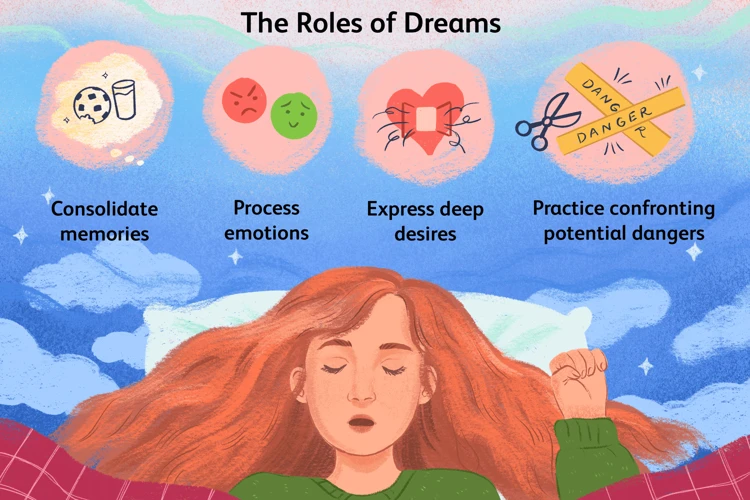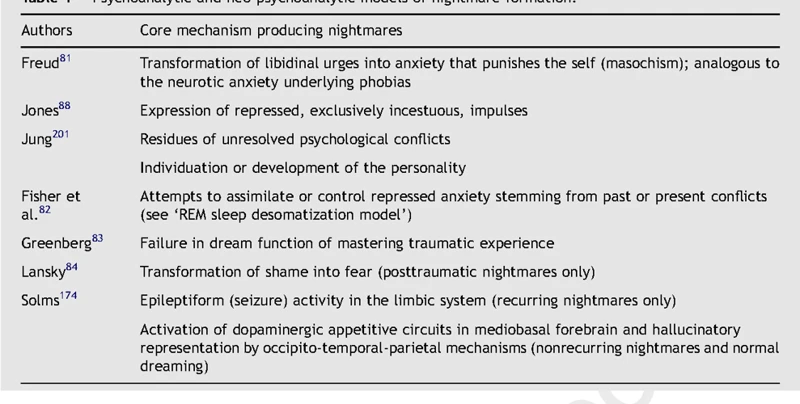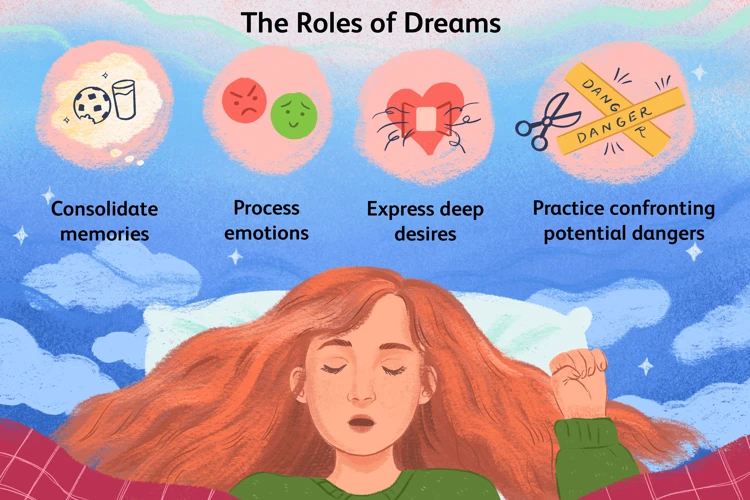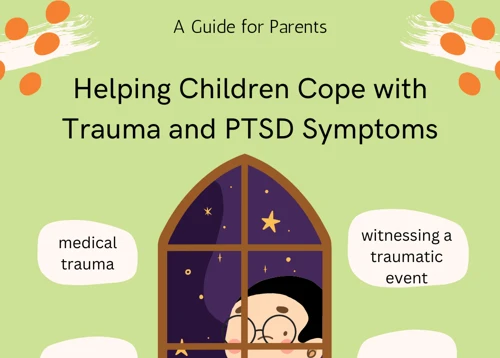Nightmares are frightening and distressing experiences that can have a significant impact on our mental and emotional well-being. For individuals who have experienced trauma, nightmares can take on an even deeper meaning. Understanding the link between trauma and nightmares is crucial in order to effectively cope with and prevent these unsettling dreams. In this comprehensive guide, we will explore the definition and types of nightmares, delve into the connection between trauma and nightmares, examine the effects of trauma on dream content, explore the psychological mechanisms behind trauma-related nightmares, discuss coping strategies, and provide tips for preventing trauma-related nightmares. By gaining a deeper understanding of the impact of trauma on nightmares, we can empower ourselves to navigate this challenging aspect of our inner world.
Understanding Nightmares

Nightmares are enigmatic and unsettling experiences that can leave us feeling fearful and anxious upon waking. Understanding the intricacies of nightmares allows us to gain insight into their impact on our lives. Defined as vivid and disturbing dreams that occur during rapid eye movement (REM) sleep, nightmares can encompass a range of themes and emotions. Whether it’s being chased by a faceless figure or reliving a traumatic event, nightmares can be deeply unsettling. By exploring the different types of nightmares, such as anxiety dreams or recurrent nightmares, we can begin to unravel the hidden meanings behind these nocturnal experiences. It is important to note that nightmares can also be linked to conditions like post-traumatic stress disorder (PTSD) or sleep paralysis; understanding these connections can provide further clarity on the nature of nightmares. By delving into the world of nightmares, we can decipher the messages they hold and better understand their impact on our well-being.
Definition of Nightmares
Nightmares are vivid and distressing dreams that occur during the rapid eye movement (REM) stage of sleep. They are often characterized by intense fear, anxiety, or terror, leaving the dreamer feeling shaken and alarmed upon waking. These dreams are highly memorable and can be accompanied by intense emotions, physical sensations, and a sense of helplessness. Nightmares typically involve situations or events that are threatening, dangerous, or deeply disturbing, such as being chased, attacked, or experiencing a life-threatening situation. The content of nightmares can vary widely among individuals, ranging from specific fears or traumatic memories to more abstract or surreal scenarios. Recurrent nightmares, which are repeated dreams with similar themes, are also common. It’s important to note that nightmares differ from ordinary dreams in their negative emotional tone, vividness, and the disturbance they cause upon waking. While occasional nightmares are a normal part of the sleep experience, when they become frequent, recurring, or interfere with daily life, it may indicate a need for further exploration and possible therapeutic intervention. For more information on the role of nightmares in conditions such as post-traumatic stress disorder (PTSD), you can read our comprehensive guide here. Additionally, understanding the hidden meanings and symbolism in nightmares can offer valuable insights into our subconscious mind; to learn more about interpreting nightmares and dream symbols, you can explore our related article here.
Types of Nightmares
When it comes to nightmares, there is a wide range of types, each with its own distinct characteristics and themes. Anxiety dreams are one common type of nightmare, characterized by feelings of worry, stress, and unease. These dreams often involve scenarios where the dreamer is unprepared or faced with overwhelming challenges. Another type is repetitive nightmares, which are recurrent and involve similar themes or situations. These dreams may indicate unresolved emotional issues or trauma. Night terrors are a particularly intense type of nightmare, accompanied by intense fear and physical symptoms such as rapid heart rate and sweating. Sleep paralysis, often associated with vivid hallucinations and the inability to move, is another type of nightmare that occurs during the transition between sleep and wakefulness. Exploring these different types of nightmares can help individuals gain insight into their dreams and potentially uncover any underlying psychological or emotional factors that may be at play. To learn more about the connection between nightmares and sleep paralysis, check out our article on the nightmares-sleep paralysis connection.
The Link Between Trauma and Nightmares

Trauma and nightmares are intricately intertwined, with trauma often being a catalyst for the emergence of distressing dreams. Trauma, defined as a distressing event or series of events that overwhelm an individual’s ability to cope, can leave lasting imprints on the mind and manifest in various ways, one of which is through nightmares. Extensive research has shown a strong correlation between trauma and nightmares, particularly in individuals who have experienced traumatic events such as physical or sexual abuse, accidents, natural disasters, or warfare. These nightmares can serve as a way for the subconscious mind to process and attempt to make sense of the traumatic experiences. The link between trauma and nightmares highlights the profound impact that traumatic events can have on our psychological and emotional well-being, and understanding this connection is crucial in order to provide appropriate support and treatment for those who have experienced trauma.
Explanation of Trauma
Trauma is a complex psychological and emotional response to an overwhelmingly distressing event or series of events. It can result from experiences such as physical or sexual abuse, natural disasters, accidents, combat, or witnessing violence. Understanding the nature of trauma is essential in order to comprehend its impact on nightmares. Traumatic events often shatter an individual’s sense of safety, security, and trust in the world, leaving emotional scars that can persist long after the actual event. Trauma can have various effects on individuals, including intrusive thoughts, hypervigilance, avoidance behaviors, and emotional dysregulation. It is important to recognize that trauma manifests differently for each person, and what may be traumatic for one individual may not have the same impact on another. The way trauma is processed and remembered also varies, making it a highly individualized experience. To fully grasp the link between trauma and nightmares, we must first delve into the complexities and nuances of trauma itself.
Research on Trauma-related Nightmares
Research on trauma-related nightmares is a critical area of study that aims to shed light on the profound impact of trauma on our dream experiences. Numerous studies have explored the relationship between trauma and nightmares, revealing valuable insights into this complex connection. Here are some key findings from the research:
1. Prevalence: Research indicates that individuals who have experienced trauma are more likely to experience frequent and distressing nightmares. The occurrence of trauma-related nightmares is significantly higher in populations such as war veterans, survivors of abuse, and individuals with PTSD.
2. Severity: Studies have shown that trauma-related nightmares are often more intense, vivid, and emotionally distressing compared to non-trauma-related nightmares. This intensity can contribute to increased sleep disturbances and impair daytime functioning.
3. Re-traumatization: Trauma-related nightmares can serve as re-traumatizing experiences, as they may closely resemble or recreate the traumatic event. This can lead to heightened levels of fear, anxiety, and psychological distress, further impacting overall well-being.
4. Relation to PTSD: Trauma-related nightmares are closely associated with post-traumatic stress disorder (PTSD). They often reflect the themes and emotional aspects of the trauma experienced, functioning as a form of symptom re-experiencing commonly seen in PTSD.
5. Treatment implications: Research on trauma-related nightmares has played a crucial role in informing effective treatment approaches. Therapeutic interventions like cognitive-behavioral therapy (CBT) and eye movement desensitization and reprocessing (EMDR) have been found to significantly reduce the frequency and intensity of trauma-related nightmares in individuals with PTSD.
It is important to note that ongoing research in this field continues to deepen our understanding of trauma-related nightmares and inform the development of innovative interventions to alleviate their impact. By studying the phenomenon of trauma-related nightmares, researchers aim to improve the well-being and quality of life for individuals who have experienced trauma.
Effects of Trauma on Dream Content

The effects of trauma on dream content can be profound, shaping the themes and emotions that manifest in our dreams. Trauma-related nightmares often revolve around the traumatic event itself, replaying distressing scenes or situations that reflect the individual’s fears and anxieties. These dreams may be characterized by intense emotions, such as terror, helplessness, or anger, that mimic the feelings experienced during the traumatic event. Additionally, recurrent nightmares may be triggered by a specific trauma-related cue or reminder, further reinforcing the powerful impact of trauma on dream content. It is important to recognize that the content of these nightmares can vary widely depending on the individual and the nature of the trauma they have experienced. The emotional intensity and vividness of trauma-related dreams can persist long after the traumatic event, highlighting the enduring impact of trauma on our subconscious minds. By understanding the role of trauma in shaping dream content, we can gain insight into the complex interplay between our past experiences and our sleep experiences.
Common Themes in Trauma-related Nightmares
Trauma-related nightmares often manifest with specific themes that reflect the experiences and emotions associated with the traumatic event. These themes can vary depending on the nature of the trauma and the individual’s personal background. Here are some common themes frequently observed in trauma-related nightmares:
1. Recurring Traumatic Event: Many individuals who have experienced trauma may find themselves repeatedly reliving the traumatic event in their nightmares. These nightmares can mimic the actual event or contain symbolic representations of the trauma.
2. Threats and Danger: Nightmares involving threats and danger often reflect the individual’s heightened sense of vulnerability and fear. This theme may involve being pursued, attacked, or trapped in dangerous situations, amplifying the feelings of powerlessness and distress.
3. Helplessness: A prevalent theme in trauma-related nightmares is a sense of helplessness or being unable to escape from a threatening situation. This feeling of being trapped or paralyzed can mirror the emotions experienced during the actual trauma.
4. Loss and Grief: Traumatic experiences often involve significant loss, whether it’s the loss of a loved one, a sense of safety, or one’s own identity. Nightmares may evoke feelings of grief, longing, or sadness, as individuals process and cope with the aftermath of trauma.
5. Flashbacks and Intrusive Memories: Trauma-related nightmares may incorporate flashbacks or intrusive memories of the traumatic event. These vivid and distressing dream elements can trigger emotional responses similar to those experienced during the original trauma.
6. Anxiety and Fear: Nightmares involving anxiety and fear are common in individuals who have experienced trauma. These dreams may be characterized by a constant sense of impending danger or an atmosphere of dread, reflecting the lingering effects of the trauma on the individual’s psyche.
It is important to note that while these themes are commonly observed in trauma-related nightmares, each individual’s experience is unique. The interpretation and meaning of these themes can vary, as personal associations and memories play a significant role in shaping the content of nightmares. Recognizing these common themes can aid in understanding the impact of trauma on dream content and provide insights for therapeutic interventions and coping strategies.
Emotional Intensity of Trauma-related Dreams
The emotional intensity of trauma-related dreams is a distinctive characteristic that sets them apart from ordinary dreaming experiences. When individuals who have experienced trauma enter the dream state, their dreams can be characterized by heightened emotional arousal and intense feelings. These emotions often mirror the emotions experienced during the traumatic event itself, such as fear, helplessness, anger, or sadness. The emotions in trauma-related dreams can be so vivid and overwhelming that they can elicit physical responses, such as increased heart rate, sweating, or even waking up in a state of distress. This emotional intensity is a result of the brain’s attempt to process and make sense of the traumatic experience during sleep. The dream realm provides a space where repressed emotions can surface, allowing individuals to confront and process their traumas in a symbolic and metaphorical way. The emotional intensity of trauma-related dreams can serve as an indicator of the unresolved psychological impact of trauma and can be a valuable point of exploration in therapy or self-reflection. By acknowledging and understanding the emotional intensity of these dreams, individuals can actively engage in their healing journey and work towards resolving the underlying trauma.
Psychological Mechanisms of Trauma-related Nightmares

The psychological mechanisms behind trauma-related nightmares are complex and multifaceted. One prominent mechanism is the phenomenon of re-experiencing and flashbacks in dreams. Trauma survivors may find themselves reliving the traumatic event during nightmares, as if transported back to the original experience. These vivid and distressing dreams can evoke intense emotions and physical sensations, contributing to the distress caused by trauma. Additionally, memory plays a crucial role in trauma-related nightmares. The brain’s processing and consolidation of traumatic memories during sleep can result in fragmented and fragmented dreams that fuse elements of the trauma with other experiences or stimuli. This integration of memories and emotions intensifies the impact of nightmares on individuals who have experienced trauma, making them vivid and emotionally charged. By understanding these psychological mechanisms, therapists and individuals can employ targeted interventions to address and alleviate the distress caused by trauma-related nightmares.
Re-experiencing and Flashbacks in Dreams
Re-experiencing and flashbacks in dreams are key psychological mechanisms that play a significant role in trauma-related nightmares. When individuals have experienced trauma, their memories of the event can haunt them during sleep, manifesting as vivid and distressing nightmares. These nightmares often involve reliving the traumatic event, with the individual experiencing the sights, sounds, and emotions just as they did during the actual trauma. Re-experiencing in dreams allows the brain to process and attempt to make sense of the traumatic experience, but it can also be an emotionally overwhelming and distressing phenomenon. It is important to note that re-experiencing in dreams is not limited to only replaying the entire traumatic event but can also involve snippets or fragments of the experience. This can make the nightmare feel fragmented and disjointed, adding to the overall distress.
Another aspect of trauma-related nightmares is the presence of flashbacks. Flashbacks are intense and intrusive memories that can occur during wakefulness, but they can also appear within dreams. These flashbacks can be triggered by various stimuli, both internal and external, and often leave the individual feeling as if they are back in the traumatic moment. Flashbacks in dreams can be overwhelming, leading to feelings of helplessness, panic, and a lack of control. The brain’s attempt to reconcile these traumatic memories during sleep can result in a heightened emotional response within the dream, intensifying the distress experienced by the individual.
Understanding the role of re-experiencing and flashbacks in trauma-related nightmares is crucial for individuals dealing with the aftermath of trauma. By recognizing these mechanisms at play, individuals can work with mental health professionals to develop coping strategies and find healing. It is important to remember that trauma-related nightmares are a manifestation of the brain’s attempt to process and reconcile traumatic experiences, and seeking support is an essential step towards recovery.
Role of Memory in Trauma-related Nightmares
The role of memory in trauma-related nightmares is a complex and fascinating aspect to explore. Memory plays a crucial role in shaping our dreams, especially when it comes to traumatic experiences. When someone experiences a traumatic event, the memory of that event can become fragmented, disjointed, or distorted. These fragmented memories can then resurface during dreams, leading to vivid and distressing nightmares.
Memory consolidation during sleep: Sleep is a vital process for memory consolidation, where the brain processes and consolidates memories from the day. For individuals who have experienced trauma, this memory consolidation process can become disrupted. The brain struggles to integrate and make sense of the traumatic memories, resulting in fragmented and unresolved memories that are more likely to manifest as nightmares during sleep.
Re-experiencing in dreams: Trauma-related nightmares often involve re-experiencing the traumatic event itself or elements of the event. This re-experiencing can be vivid and emotionally intense, as the brain attempts to process and make sense of the trauma during sleep. These nightmares can be triggered by various cues, such as specific sounds, smells, or visual stimuli associated with the traumatic event.
Memory fragmentation and emotions: The emotions associated with the traumatic event can also influence the content of trauma-related nightmares. Emotions such as fear, anger, and sadness may be heightened in these dreams, intensifying the distress experienced during the nightmare. The fragmented nature of the memory can further contribute to the emotional intensity, as the brain struggles to piece together the different components of the traumatic experience.
Increased activation of the amygdala: The amygdala, a part of the brain involved in processing emotions, plays a significant role in trauma-related nightmares. Research has shown that individuals with trauma-related nightmares have increased amygdala activation during sleep. This heightened activation may contribute to the intense emotional experiences and fear-driven content often seen in these nightmares.
The role of memory in trauma-related nightmares is multifaceted. The fragmented nature of memory consolidation, re-experiencing of the traumatic event, emotional intensity, and increased activation of the amygdala all contribute to the formation and content of these distressing dreams. Understanding the intricate interplay between memory and nightmares can help individuals and healthcare professionals develop effective strategies for coping with and managing trauma-related nightmares.
Coping Strategies for Trauma-related Nightmares

Coping with trauma-related nightmares can be a challenging and overwhelming task, but there are several effective strategies that can help manage and alleviate their impact. One of the first steps in coping with trauma-related nightmares is seeking therapeutic interventions. These can include cognitive-behavioral therapy (CBT), eye movement desensitization and reprocessing (EMDR), or exposure therapy, among others. These therapies work to process and integrate the trauma memories, reducing the frequency and intensity of nightmares. Additionally, individuals can also employ self-help techniques to cope with trauma-related nightmares. This may involve maintaining a regular sleep schedule, engaging in relaxation exercises before bed, practicing lucid dreaming techniques, or creating a calming bedtime routine. By combining therapeutic interventions with self-help strategies, individuals can develop effective coping mechanisms to navigate the impact of trauma-related nightmares and improve their overall sleep quality and psychological well-being.
Therapeutic Interventions
Therapeutic interventions play a crucial role in addressing and managing trauma-related nightmares. Therapy provides individuals with a supportive and safe environment to explore their experiences, process trauma, and develop coping mechanisms. One commonly used approach is cognitive behavioral therapy (CBT), which focuses on identifying and challenging negative thought patterns, emotions, and behaviors associated with nightmares. CBT techniques, such as imagery rehearsal therapy (IRT), involve actively rehearsing alternative and positive dream scenarios, promoting a sense of control and mastery over the nightmare content. Eye Movement Desensitization and Reprocessing (EMDR) is another therapeutic intervention that has shown promise in treating trauma-related nightmares. This technique involves bilateral stimulation, which can be achieved through eye movements, tapping, or auditory cues, to help desensitize traumatic memories and decrease distressing dream content. Additionally, therapists may incorporate relaxation and stress-reduction techniques, such as mindfulness and deep breathing exercises, to promote a sense of calmness before sleep. The implementation of therapeutic interventions can aid individuals in processing trauma, reducing the frequency and intensity of nightmares, and improving overall sleep quality and well-being.
Self-help Techniques
When it comes to coping with trauma-related nightmares, there are various self-help techniques that individuals can explore. These techniques provide individuals with tools and strategies to manage and reduce the frequency and intensity of nightmares on their own. Here are some self-help techniques that can be effective:
1. Keeping a dream journal: Maintaining a dream journal allows individuals to record and analyze their nightmares. By writing down the details of the dream, including emotions, themes, and any potential triggers, individuals can gain insights into recurring patterns or symbols. This awareness can help in identifying the underlying issues and working towards resolving them.
2. Implementing a bedtime routine: Establishing a relaxing bedtime routine can create a calming atmosphere before sleep, reducing the likelihood of nightmares. Activities such as taking a warm bath, practicing deep breathing exercises, or engaging in a soothing activity like reading can promote a sense of relaxation and help transition into a peaceful sleep.
3. Creating a safe sleep environment: A conducive sleep environment can contribute to a more restful and nightmare-free sleep. This includes keeping the bedroom dark, quiet, and at a comfortable temperature. Additionally, removing any potential triggers or reminders of trauma from the bedroom can help create a sense of safety and security.
4. Practicing stress management techniques: High levels of stress can exacerbate nightmares. Engaging in stress management techniques such as mindfulness meditation, yoga, or engaging in regular physical exercise can help reduce overall stress levels, which may in turn alleviate nightmares.
5. Seeking social support: Talking to trusted friends, family, or support groups about the experiences and emotions associated with trauma can provide a sense of validation and comfort. Sharing these experiences with others who have gone through similar situations can offer a supportive environment for healing and recovery.
It is important to remember that self-help techniques may vary in effectiveness for different individuals. It may be beneficial to try out different strategies and adapt them to suit personal preferences and needs. If nightmares persist and significantly impact daily functioning, seeking professional help from a therapist or counselor specializing in trauma may be recommended.
Preventing Trauma-related Nightmares
Finding ways to prevent trauma-related nightmares is essential for promoting better sleep and overall mental health. Making certain lifestyle adjustments can significantly reduce the frequency and intensity of these distressing dreams. Strategies such as practicing relaxation techniques, engaging in regular exercise, and maintaining a consistent sleep schedule can help create a more conducive environment for peaceful sleep. Additionally, addressing and processing the trauma through therapy or counseling can play a crucial role in managing and minimizing nightmares. Ensuring a safe sleep environment that promotes feelings of comfort and security is also vital. This can be achieved by creating a calming bedroom atmosphere, implementing a relaxing bedtime routine, and avoiding triggers that may contribute to nightmares. By taking proactive steps to prevent trauma-related nightmares, individuals can reclaim a sense of control over their sleep and well-being, ultimately fostering a healthier and more restful night’s rest.
Lifestyle Adjustments
Making certain lifestyle adjustments can play a significant role in preventing trauma-related nightmares. Here are some practical steps you can take to create a sleep-friendly environment and promote overall well-being:
1. Establish a Consistent Sleep Routine: Going to bed and waking up at the same time every day helps regulate your body’s internal clock and promote better sleep. Create a relaxing bedtime routine that includes calming activities such as reading a book or taking a warm bath before sleep.
2. Engage in Physical Exercise: Regular exercise not only helps in reducing stress but also promotes better sleep. Engaging in activities like yoga, running, or swimming can positively impact your overall sleep quality and reduce the likelihood of nightmares.
3. Manage Stress: High levels of stress can contribute to nightmares. Implement stress-management techniques such as deep breathing exercises, meditation, or practicing mindfulness throughout your day. Find healthy outlets, such as hobbies or engaging in activities that bring you joy, to help reduce stress levels.
4. Limit Stimulants: Avoid consuming stimulants like caffeine, nicotine, and alcohol close to bedtime, as these substances can disrupt sleep patterns and increase the likelihood of experiencing nightmares.
5. Create a Sleep-Friendly Environment: Make your bedroom a comfortable and peaceful space for sleep. Ensure your room is cool, dark, and quiet. Consider using earplugs, an eye mask, or a white noise machine if needed.
6. Maintain a Balanced Diet: Certain foods can impact our sleep quality. Aim for a well-balanced diet that includes fruits, vegetables, whole grains, and lean proteins. Avoid heavy meals before bedtime, as digestive discomfort can interfere with sleep.
7. Limit Screen Time Before Bed: The blue light emitted from electronic devices can disrupt the production of melatonin, a hormone that regulates sleep. Limit screen time at least an hour before bedtime to allow your body to prepare for sleep.
By implementing these lifestyle adjustments, you can create an environment that supports restful sleep and reduces the likelihood of experiencing trauma-related nightmares. Remember, everyone is different, so find the strategies that work best for you and make them a part of your daily routine.
Creating a Safe Sleep Environment
Creating a Safe Sleep Environment is crucial for individuals experiencing trauma-related nightmares, as it can help promote feelings of safety and security during sleep. Here are some important factors to consider when creating a safe sleep environment:
1. Bedroom Setup: Ensure that your bedroom is a comfortable and calming space. Keep the room clean, organized, and free from clutter. Consider using soft lighting or a night light to create a soothing atmosphere.
2. Temperature and Ventilation: Maintain a comfortable temperature in your bedroom. Make sure the room is well-ventilated to promote airflow and prevent stuffiness. Use breathable bedding materials that help regulate body temperature.
3. Noise Reduction: Minimize noise distractions that can disrupt sleep. Use earplugs, a white noise machine, or soothing music to drown out any disturbing sounds. Soundproof curtains or carpets can also help reduce external noise.
4. Comfortable Bedding: Invest in a comfortable mattress, pillows, and bedding that support a good night’s sleep. Choose materials that feel pleasant against the skin and promote proper body alignment.
5. Security Measures: Install measures that enhance your sense of safety, such as window locks, door reinforcements, or a security system. Feeling secure and protected within your sleeping environment can alleviate anxiety and promote a sense of calmness.
6. Nighttime Routine: Develop a relaxing bedtime routine to signal to your body and mind that it’s time to unwind and prepare for sleep. This can include activities like reading a book, taking a warm bath, or practicing relaxation techniques.
7. Avoidance of Stimulants: Limit the consumption of stimulants such as caffeine, nicotine, and alcohol, especially close to bedtime. These substances can interfere with sleep quality and increase the likelihood of experiencing nightmares.
8. Sleep Hygiene: Stick to a consistent sleep schedule, aiming for the recommended hours of sleep each night. Establishing a regular sleep routine can help regulate your body’s internal clock and contribute to more restful sleep.
By implementing these strategies, you can create a safe and peaceful sleep environment that promotes relaxation and minimizes the chances of experiencing trauma-related nightmares. Remember that each individual’s sleep needs may vary, so it’s important to find what works best for you in creating a safe and nurturing sleep environment.
Conclusion
In conclusion, the impact of trauma on nightmares is a complex and multifaceted phenomenon. Nightmares can serve as powerful indicators of unresolved trauma, deep-seated emotions, and psychological distress. Understanding the link between trauma and nightmares is crucial for individuals seeking to navigate and heal from their traumatic experiences. Through research and clinical studies, we have gained valuable insights into the effects of trauma on dream content and the psychological mechanisms underlying trauma-related nightmares.
It is evident that trauma-related nightmares often involve common themes such as threat, helplessness, and re-experiencing traumatic events. The emotional intensity of these dreams can be overwhelming, as they often elicit feelings of fear, sadness, and anxiety. The role of memory in trauma-related nightmares is also significant, as these dreams can serve as a way for the mind to process and integrate traumatic experiences.
Fortunately, there are coping strategies and therapeutic interventions available to help individuals manage and alleviate the distress caused by trauma-related nightmares. Seeking professional help from therapists specializing in trauma can provide guidance and support in processing and healing from past traumas. Self-help techniques such as relaxation exercises, dream journaling, and creating a safe sleep environment can also be valuable tools in managing nightmares.
Prevention is another crucial aspect of dealing with trauma-related nightmares. Making lifestyle adjustments, such as practicing stress reduction techniques, engaging in regular physical activity, and seeking social support, can contribute to overall well-being and minimize the likelihood of experiencing distressing dreams. Creating a safe sleep environment that promotes relaxation and a sense of security can also help prevent nightmares.
In conclusion, understanding the impact of trauma on nightmares is an important step towards healing and recovery. By acknowledging the connection between trauma and nightmares, individuals can empower themselves to seek appropriate support and implement effective coping strategies. Nightmares may be haunting, but with the right tools and support, they can be navigated and transformed into catalysts for healing and growth. The journey towards overcoming trauma-related nightmares is a deeply personal one, but it is a journey that can lead to profound healing and a renewed sense of well-being.
Frequently Asked Questions
What are the common triggers of nightmares?
Nightmares can be triggered by a variety of factors, including stress, anxiety, trauma, medications, sleep disorders, and even certain foods or drinks consumed before bedtime.
Can traumatic experiences from childhood lead to recurring nightmares in adulthood?
Yes, traumatic experiences from childhood can often resurface in the form of recurring nightmares in adulthood. These nightmares serve as a way for the subconscious mind to process and cope with unresolved emotions from the past.
Are nightmares related to mental health conditions?
Yes, nightmares can be related to various mental health conditions, including anxiety disorders, post-traumatic stress disorder (PTSD), depression, and schizophrenia. They can also be a symptom of sleep disorders such as sleep apnea or narcolepsy.
Can nightmares be re-enactments of past traumatic events?
Absolutely. Nightmares can sometimes be vivid re-enactments or symbolic representations of past traumatic events. These dreams can be distressing and serve as a way for the mind to process and make sense of the trauma.
Do nightmares have any physical effects on the body?
Yes, nightmares can trigger physical responses in the body such as increased heart rate, sweating, and even sleep disturbances such as insomnia or sleep walking.
How can trauma impact the content of a nightmare?
Trauma can significantly impact the content of nightmares, often leading to intense and disturbing themes such as re-experiencing the trauma, feelings of helplessness, or being in life-threatening situations.
Can therapy help in reducing trauma-related nightmares?
Yes, therapy, such as cognitive-behavioral therapy (CBT) or eye movement desensitization and reprocessing (EMDR), can be effective in reducing trauma-related nightmares by helping individuals process and cope with the underlying trauma.
Are there any self-help techniques to manage nightmares?
Yes, there are self-help techniques that can help manage nightmares, such as keeping a dream journal, practicing relaxation techniques before bed, creating a soothing sleep environment, and engaging in stress-reduction activities during the day.
Can certain lifestyle adjustments prevent nightmares?
Yes, certain lifestyle adjustments can help prevent nightmares. These may include maintaining a regular sleep schedule, avoiding stimulating activities before bed, practicing stress management techniques, and avoiding substances like alcohol or caffeine close to bedtime.
Is there a connection between nightmares and sleep paralysis?
Yes, there is a connection between nightmares and sleep paralysis. Sleep paralysis can occur when a person transitions between sleep stages and finds themselves temporarily unable to move or speak, often accompanied by vivid and unsettling hallucinations or nightmares.








